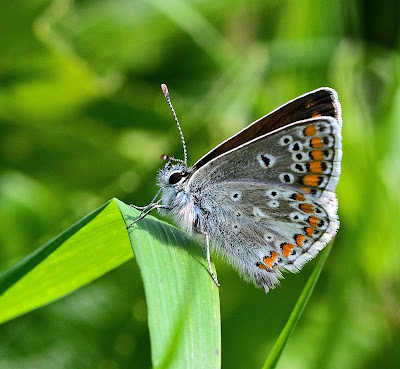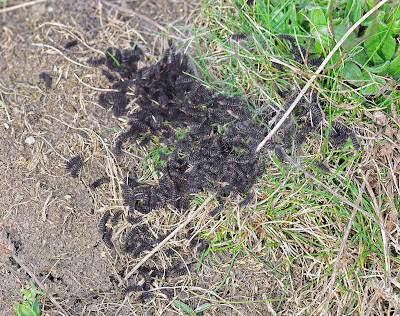The recent history of the Large Tortoiseshell on the Isle of Wight is one of several sightings of individuals scattered around the Island mainly during the summer months.This has been interpreted as migrants from the continent and that is probably a correct assumption.However in 2009 at Woodhouse Copse no less than five were reported on the 19th March.All it seems were along a single woodland ride in what was then a well managed copse.Where did all these originate from?who can tell, although the time of year would indicate they had just emerged from hibernation.
The following year it seemed that this would be 'a one off' for the copse as none were seen there and sightings in general were again restricted to the odd one or two about the Island.But in 2011 the Large Tortoiseshell was back at Woodhouse with three seen on the 7th March,another two on the 22nd March,and seven more sightings of 'ones' until the 8th April.
When it seemed that the copse could be the next 'stronghold' of this iconic species,2012 proved to be a disappointment as Woodhouse Copse was sold,woodland management was abandoned, and human disturbance put an end to the chance of further sightings.As far as I am aware no sightings of the butterfly have been made there since.
Still,there are other woodlands,and at Newtown the National Trust maintain several copse,one of which is Walters Copse.This is very well managed and without a doubt my favourite haunt for all sorts of wildlife.
So it was here on 27th March 2012 that a Large Tortoiseshell was spotted taking moisture from a damp area of ground in a clearing.It was a female in excellent condition and recently out of hibernation after maybe spending the winter in or around the copse.Over the next few days many butterfly watchers visited the copse and two further sightings were made of different individuals.
Hopes were now high for a repeat performance at Walters Copse in 2013 but due to the very cold weather that lasted into March the spring was put on hold for a while.Finally, in April it warmed up and on the 19th a rather tatty male was seen in Walters.This male proved to be very accommodating and stayed on its territory for several days allowing all to get a good view.In fact it was not the only Large Tortoiseshell in the immediate area as others were also recorded in.the copse and in the surrounding meadows.
In contrast to the previous two years,the spring of 2014 did not produce any probable sightings at Walters Copse,so we can only hope that this year the Large Tortoiseshell will return to grace our Island woodlands.



































